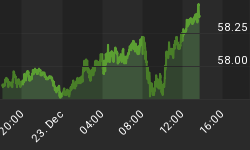Although many are confused by these markets, there is a simple explanation for every strange thing going on right now: The United States is rapidly devolving into a Third World country.
We've got the politicians to prove it. On one side is the classic insider, handing out favors to cronies and corporate big-shots while not-so-secretly covering her tracks and lining her pockets; on the other side is the classic Strongman, full of machismo, bluster, simple sloganeering, and even a trademark hair-do/spray tan combo. Just slap some epaulets and a row of chest medals on Donald's blazer and he could easily pass for our first Yankee Generalissimo.
But the analogy goes even deeper with monetary policy, debt, and spending. We are swimming in debt and deficits, with no other plan but "even more," which leads eventually to an Argentina-style default. Actual economic growth is anemic, while the insiders that live in Washington D.C. and environs grow ever richer on fat contracts and sweetheart legislative deals for big corporations, written by an ever-expanding minion army of lawyers and lobbyists. It's Third World cronyism on a grand scale.
So instead of peering into history to dig out just the right analog, we should instead point our gaze at the Fed's unintentional (?) financial role model -- Argentina.
And here's where it gets surprising. It's well-established that the Argentinian economy is terrible. You could search high and low and not find a single favorable article about on-the-ground economic conditions in Argentina.
But look at Argentina's stock market over the last 5 years.

Exhibit B: you would be hard-pressed to find a worse economy than Venezuela. But again, look at that market!

What the......?
Here's the answer: when politicians, central bankers, and crony banks run the show for their own direct benefit, capital gets scared and scrambles to find any kind of home that isn't a manipulated currency, or a bank that could confiscate, or debt that will inevitably default.
None of this makes sense from a fundamental, valuation-driven standpoint, except as a response to rampant inflation -- again, a by-product of too much government manipulation, which we also have in large supply in the US. These bull markets only make sense if you are aware that capital always shifts away from risk, and that when governments manipulate things too much, capital migrates away from assets and deposits subject to their malignant influence, and into areas further from their reach, like stock markets and other tangible privately-held assets.
This will put a brisk tailwind behind gold as well.

I see and hear so much conviction from fund managers and analysts that a correction -- indeed, an epic stock market crash -- is inevitable from these "lofty heights."Â They are expecting a repeat of 2008, with a deflationary spiral that sends assets crashing down. Many seem downright gleeful at the prospect of the market doling out a brutal punishment to those holding long positions.
But that was last decade's battle. The world has moved on, like it or not.

The unfortunate reality for bears-with-conviction is that this is an unambiguously bullish price pattern on the monthly chart. We've seen a strong linear trend, followed by a multi-year sideways correction -- which has then been followed by a breakout to new all-time highs. That is textbook bullish price behavior.
In fact, it's the exact opposite of how markets behave prior to a crash. There was certainly potential for a melt-down during the correction, with the 3 emotional downside thrusts, but the window for a crash has already slammed shut.
The current breakout in US stocks is an important reminder to always live in the present when it comes to markets, and to try to look as objectively as possible at the whole picture, and to not get too wrapped up in historical P/E ratios, reversions to the mean, overbought/oversold -- really, any of that traditional palaver that you hear on a daily basis.
The US market is acting like a classic Third World Bull Market. Throw out that playbook from the 2000s.
As always, I’ll keep subscribers updated in my daily reports.
















